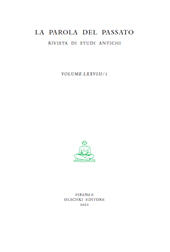Per una archeologia del vino fra gli Italici
P. 67-80
In Archaic southeast Italy, the interactions between the Greek populations settled on the Ionian coast and native groups in Apulia and Lucania underwent significant transformations. This article explores how these socio-cultural developments manifest themselves in a crucial aspect of aristocratic life, that is wine consumption. The analysis of an early-6th century élite burial from the urban necropolis of Metaponto, characterised by the presence of a Chiote chalice, suggests that Greek wine was initially imported from the eastern Mediterranean along with drinking vessels and was consumed in a different way from local wine. This hypothesis is supported by evidence from the contemporaneous ‘apsidal residence' at Torre di Satriano, in northern Lucania.
Here, imported drinking vessels appear alongside local shapes, while there is no trace of Greek pouring vessels. The phenomenon unfolded differently in Peucetia, where closer contacts with the Greeks appear to have led to a more rapid assimilation of sympotic culture by the local élites. Overall, the article discusses how, between the end of the 7th and the mid-6th century BC, wine consumption became a crucial aspect of assimilation of Greek culture by the Italic élites. [Publisher's text]
-
Artikel aus derselben Ausgabe (einzeln erhältlich)
-
Informationen
DOI: 10.1400/293803
ISSN: 2610-8739


